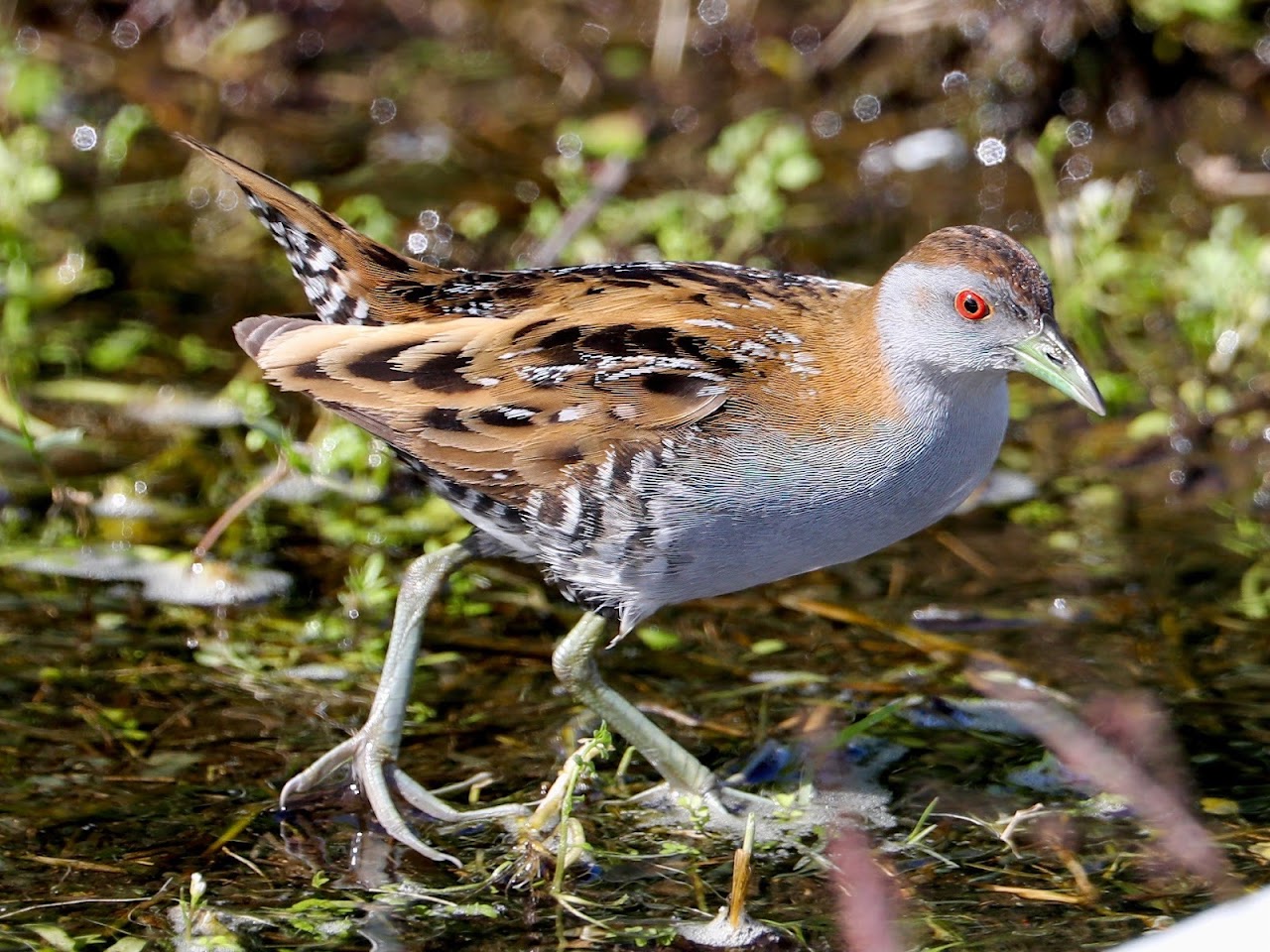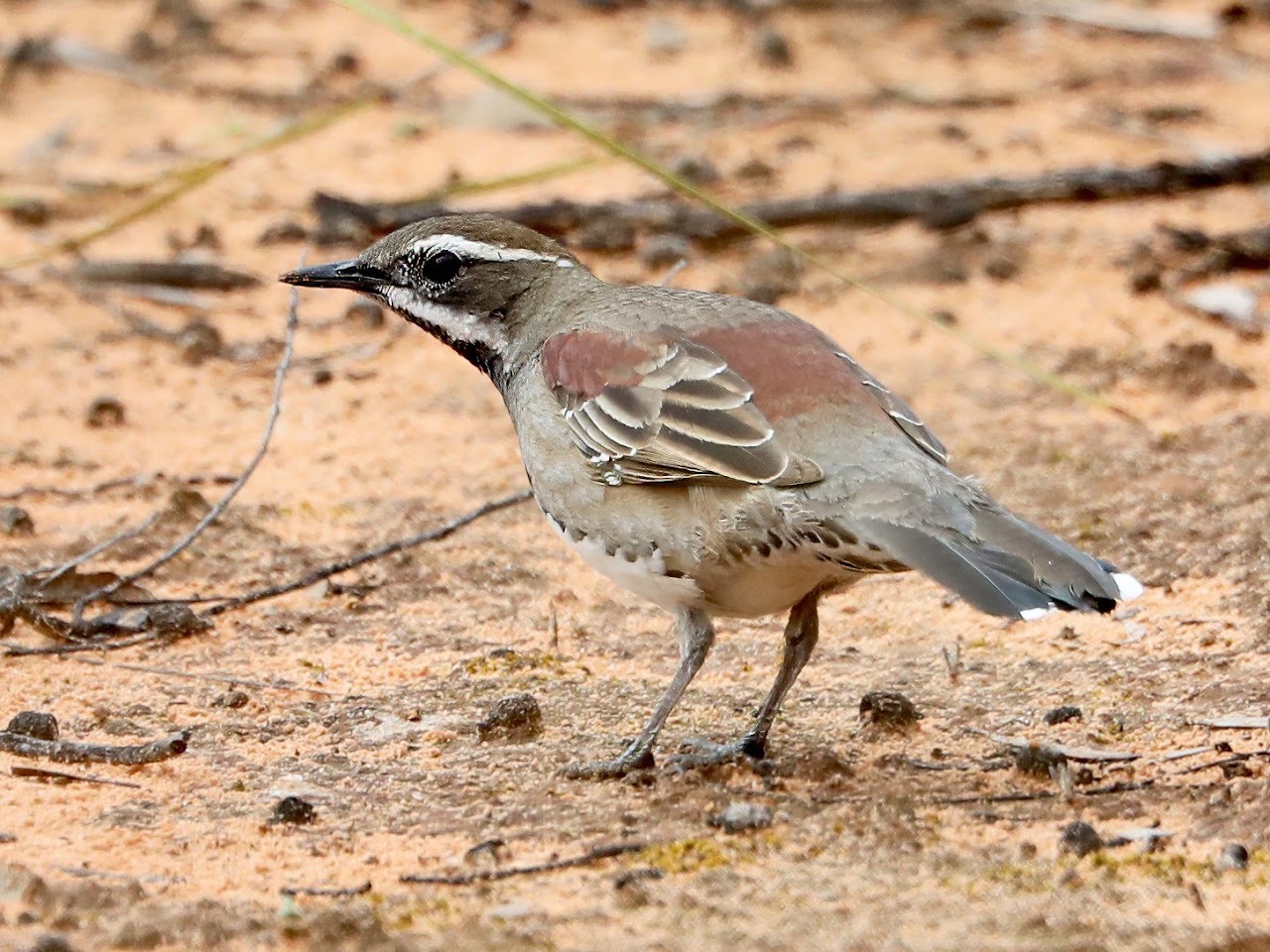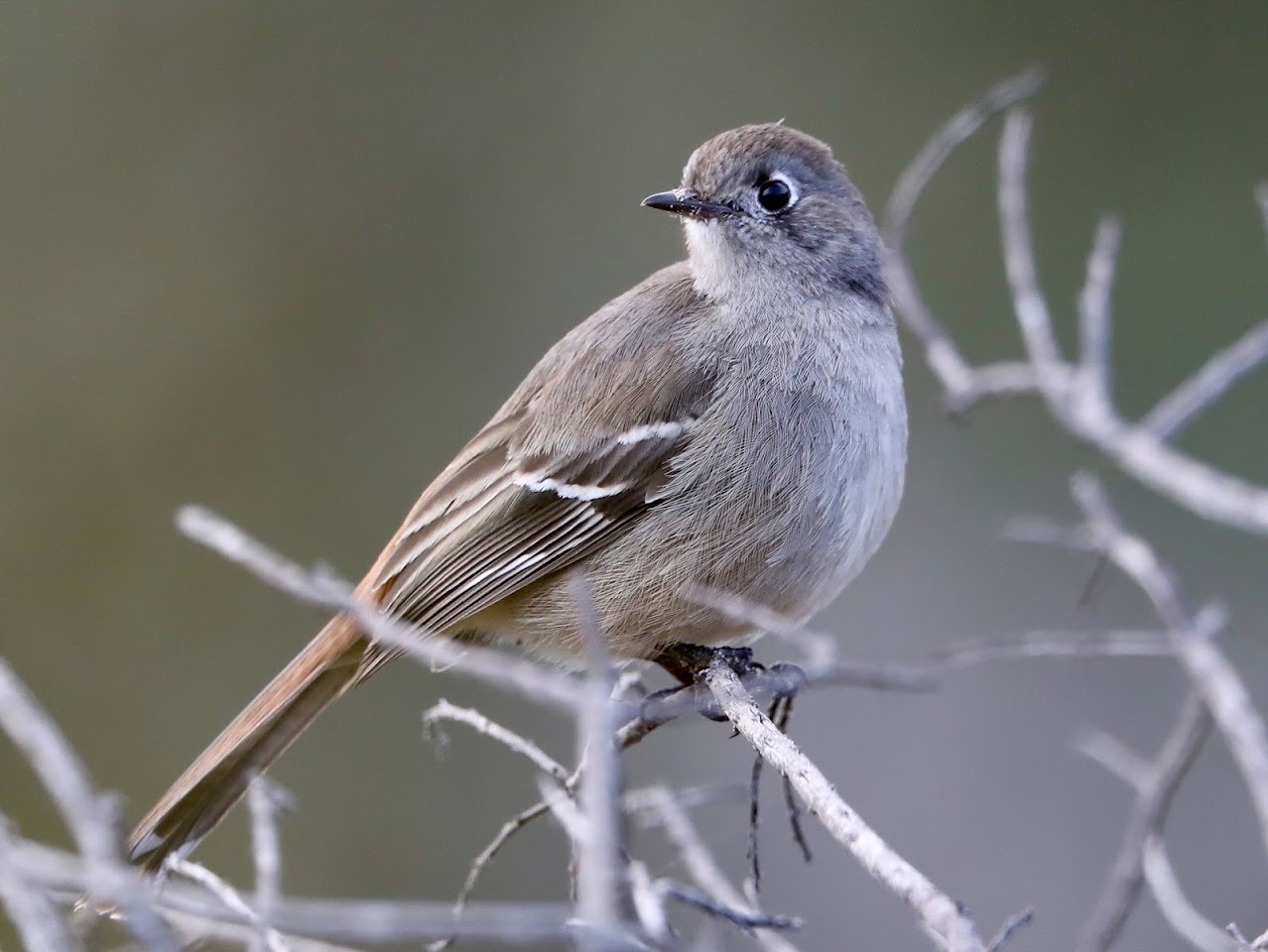Of the three Porzana crakes found in Australia, Baillon’s (Porzana pusilla) is the smallest and least reported. Baillon’s are reported in Birdata nearly half as frequently as the Spotted (P fluminea) and Spotless (P tabuensis) Crakes (see end note) . This may be due to a number of factors. Their habitat is similar however Spotless and Spotted do frequent more saline habitats whereas Baillon’s is more restricted to freshwater habitats and therefore being more particular have access to less habitat overall.
The Baillon’s larger cousins are reported to forage in more open areas of mudflats where obviously they are more easily seen. The Baillon’s is regarded as secretive and mostly stays within dense vegetation, however it does forage along edges where it can be seen. Lastly it is possible the Baillon’s, which looks similar to the Spotted, is miss identified/recorded as a Spotted Crake (of course the reverse ID issue is possible).
Given the above I was fortunate to find five Baillon’s Crakes foraging mid-morning along the edge of a heavily vegetated wetland lagoon at the Byron Integrated Wastewater Management site. I managed to approach one bird, a male (note the grey face - the females have a rufous eye-stipe), which foraged in and out of cover as it slowly moved towards me. A week later I found six birds foraging in a nearby area – the last two photos are of two birds from the second photo session.
Please click on photos to enlarge.
A couple of photos from the second session a week later.
In the first photo session the bird I followed browsed continuously barely pausing and only offering a few clear photos as it moved in and out of cover. After a few minutes it moved into the dense vegetation and did not appear again. The second longer photo session involved up to six birds all out foraging at once giving plenty of subject choice. The bird’s movements were somewhat jerky with frequent tail flicks and sudden lunges for food and rapid darts into cover before emerging again to forage – this resulted in many blurred subjects so many shots were needed to gain some sharp images.
Interestingly in the field all six birds appeared to be males with no rufous eye stripe. However on close examination of the photos some birds had a small patch of rufous in front of the eye and just a hint well behind the eye – see the following photo.
So identifying male and female in the field on the basis of the presence/absence of a rufous eye-stripe is problematic.
Also of interest was an obvious size difference among the six birds. While all were adults some birds looked to be decidedly smaller than others – was this a male/female difference? There is no mention in the three field guides I consulted of size difference.
End note:
The following Birdata total/all-time sighting records were taken from Explore for the three Porzana crakes found in Australia:
Baillon’s Crake 6,941 surveys
Australian Spotted Crake 13,320 surveys
Spotless Crake 13,351 surveys
The above numbers show Baillon’s is reported in Birdata nearly half as frequently as its two larger cousins. Reports for the Spotted and Spotless are almost identical.
This earlier Avithera post shows a Baillon’s Crake female and her young which may be of interest:
http://avithera.blogspot.com/2016/01/baillons-crake.html



























.jpeg)

.jpeg)






















